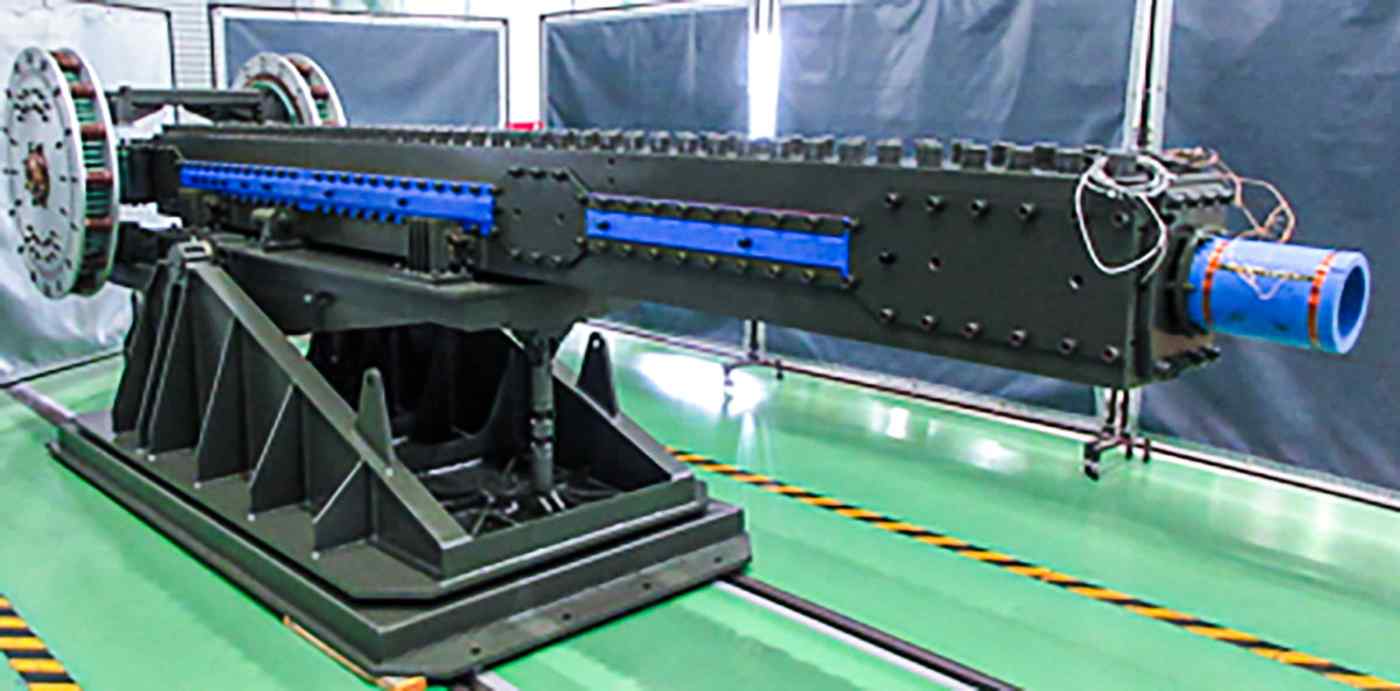El Ministerio de Defensa de Japón, lleva adelante diferentes desarrollos para hacer frente a la amenaza de los revolucionarios Misiles Hipersónicos. Entre esos programas, se pueden destacar las inversiones en la tecnología de sistemas de armas del tipo “Railgun”, aptos para disparar proyectiles impulsados solo con Energía Electromagnética. Estos proyectiles, de poco peso y que desarrollan altas velocidades de hasta MACH 7, estarían en capacidad de neutralizar la amenaza de los citados misiles.
TOKYO — The Japanese Defense Ministry will develop a means to intercept hostile missiles using magnetically powered projectiles, sources told Nikkei Asia, as the nation scurries to respond to the hypersonic weapons being developed by China, North Korea and Russia.
The ministry is focusing on railgun technology that can launch projectiles with power generated when an electric current is applied to a magnetic field. The projectiles are faster than those shot from conventional intercept systems and can be fired continuously.
Together with long-range missiles, the next-generation system will provide Japan with multilayered intercept capabilities.
Hypersonic weapons, which travel faster than five times the speed of sound, are thought to be close to coming into practical use. In November, the Financial Times reported that four months earlier China was able to fire a missile from a glide vehicle traveling at hypersonic speeds over the South China Sea.
The speed of sound is about 343 meters per second.
Other countries apparently have similar technology. North Korea has claimed that a missile it launched into the Sea of Japan in September was a hypersonic device, and Russian President Vladimir Putin plans to deploy hypersonic cruise missiles this year.
Japanese policymakers see hypersonic weapons as the next generation of military weaponry and believe the country must urgently strengthen its deterrence, especially in regard to China.
Japan is developing a railgun system not to intercept missiles but to deter any from being shot in the first place, a policymaker told Nikkei.
Hypersonic missiles fly along irregular trajectories, so conventional intercept systems, which attack ballistic missiles flying on parabolic paths, cannot stop them.
The new system will reinforce Japan’s missile response capabilities, which have been described by some experts as the “hole in Japan’s defense.” In addition to adding railgun interceptors to its existing missile defense system, Japan is considering long-range missiles that would allow it to return volleys from a distance. Together, the systems would create a three-tiered deterrent.
The Defense Ministry’s Acquisition, Technology and Logistics Agency has been researching the basic technologies behind railguns. An earmark of 6.5 billion yen ($56 million) has been included in the fiscal 2022 budget for the development of prototypes of military-use railgun equipment. Planners intend for the system to be ready for actual use in the second half of the 2020s.
Existing intercept missiles are limited to speeds of about 1,700 meters per second. Interceptors fired from electromagnetic railguns are expected to reach speeds of over 2,000 meters per second. During the research stage, a prototype achieved a speed of nearly 2,300 meters per second.
Increasing speeds raises the chances of interceptor being able to hit another hypersonic missile before it reaches its target. Being able to fire interceptors in rapid succession also improves the chances of hitting a missile traveling more than five times the speed of sound.
Railguns can also shoot interceptors at different speeds. By manipulating the amount of electrical power they apply, operators can adjust how fast an interceptor travels. Such decisions would depend on the speed of incoming missiles. It is difficult to manipulate the velocity of missiles fired with conventional propellants. The small size of a railgun’s “bullets” also gives them a degree of stealth.
The U.S. and other countries are also working on railguns, but according to the Ministry of Defense, none have yet succeeded in putting the technology into practical use.
Increasing the speed of the bullets requires that they be made from a strong material that can easily conduct electricity. The ministry believes it can use the advanced material technologies of Japanese companies.
Fuente: https://asia.nikkei.com


